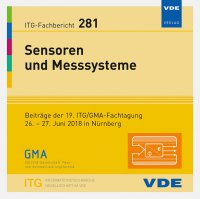Influence of additional rotational movements on the measurement uncertainty of nanomeasuring, nanopositioning and nanofabrication machines
Konferenz: Sensoren und Messsysteme - 19. ITG/GMA-Fachtagung
26.06.2018 - 27.06.2018 in Nürnberg, Deutschland
Tagungsband: Sensoren und Messsysteme
Seiten: 4Sprache: EnglischTyp: PDF
Persönliche VDE-Mitglieder erhalten auf diesen Artikel 10% Rabatt
Autoren:
Fern, Florian; Fuessl, Roland; Schienbein, Ralf; Theska, Rene (Technische Universität Ilmenau, Ilmenau, Germany)
Inhalt:
The measurement of freeform surfaces, aspheric lenses or the sidewall roughness of high aspect ratio structures are a current challenge in nanometrology. There are different publications and commercial products with approaches to perform a measurement of those quantities. Beside the nanomeasurement the nanofabrication on curved freeform surfaces is an upcoming trend. The measurement or the fabrication on a freeform surface is limited by the possible tilt angle between the tools working axis and the local surface normal. To achieve larger angles and a minimal measurement uncertainty the tool must be placed optimal to the local surface. According to those requirements, concepts are developed to increase the degree of freedom in positioning. The x-y-z translational positioning system of an nanomeasuring machine (NMM-1) with a working volume of 25 x 25 x 5 mm3 will be extended by additional rotational movements. The rotation can be achieved by three basic principles of motion which are the rotation of the sample, of the tool or a combination of the tool and the sample rotation. In a first step the principles of motion are described by their bare geometrical properties and decoupled from real positioning systems. A constant instantaneous centre of motion in the sensor measurement point is determined as the optimal principle for a rotational system. This principle is further investigated and is made concrete by choosing a combination of kinematics. A vectorial approach based on the GUM is used to evaluate the influence of the axes error motion on the measurement result. The method and the results for a combination of a rotary table and a goniometer axis are described in detail.


